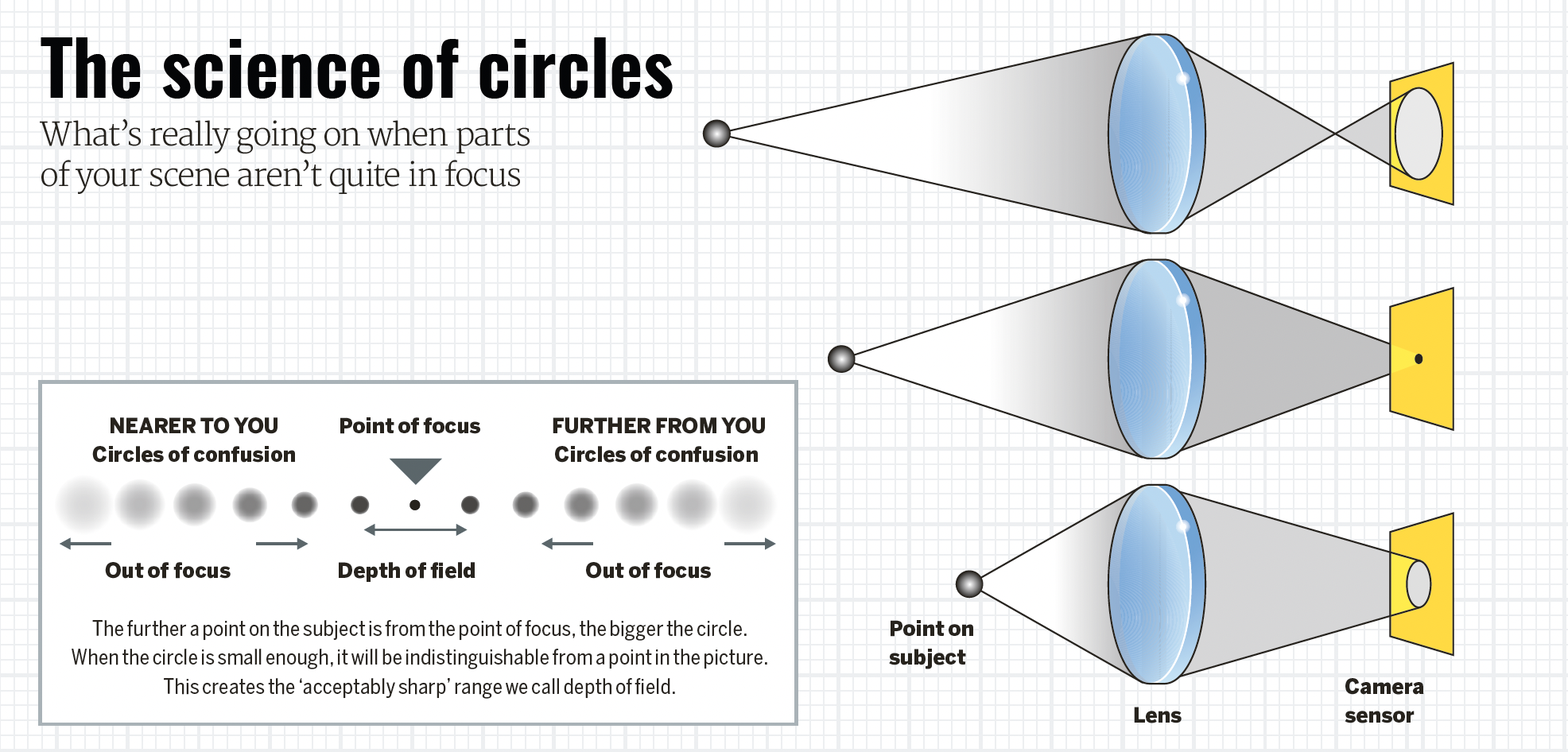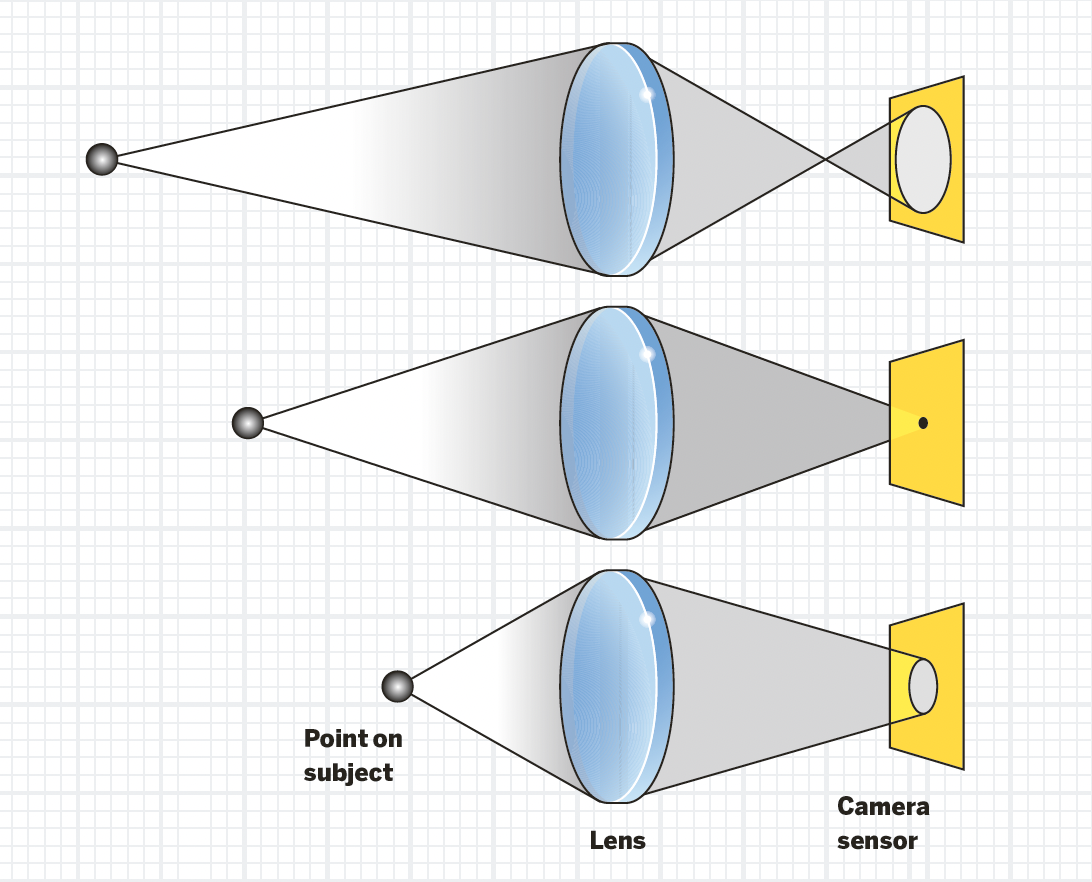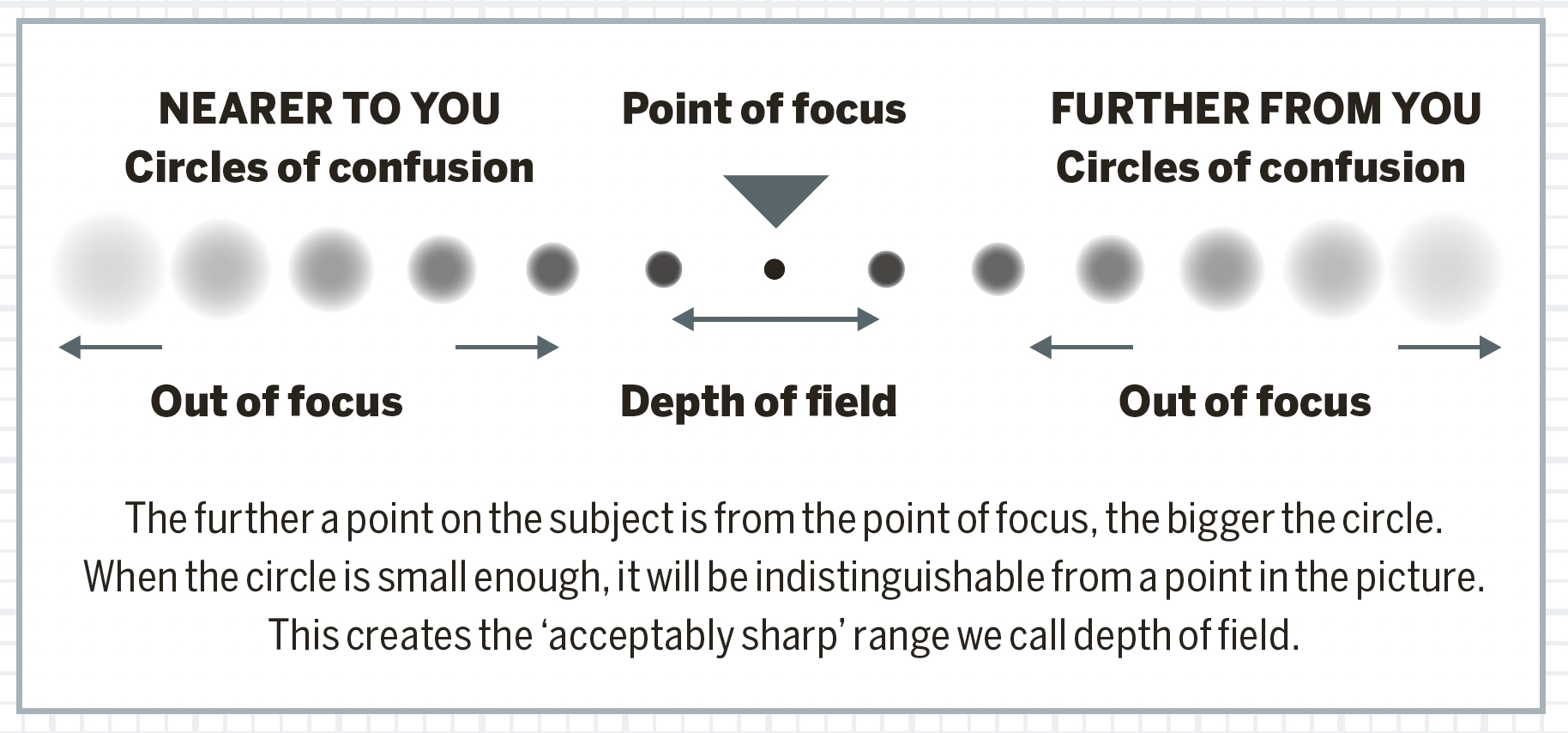Photography cheat sheet: what are circles of confusion?
The science of circles: what’s really going on when parts of your scene aren’t quite in focus

Circles of confusion in photography are aptly named, and if you're not sure what the term actually means, you're not alone! We'll try to explain the concept simply, as well as how it relates to depth of field.
According to Wikipedia, when we're thinking about optics, "a circle of confusion is an optical spot caused by a cone of light rays from a lens not coming to a perfect focus when imaging a point source."

When a lens focuses, every point of the subject gets projected as a point onto the camera's sensor. A single point on a subject is only registered as a point on the camera’s sensor if the lens is precisely focused at the right distance. Otherwise it will actually be recorded as a circle (known as a ‘circle of confusion’).

Depth of field isn’t simply a matter of some things being out of focus. Areas of a scene can range from being slightly unsharp (a small circle of confusion) to completely blurred. Things that are just outside the depth of field zone are still recognizable, and this can actually make them distracting.
To reduce or eliminate distractions, you might want to throw some areas (normally the background) so far out of focus that they’re beyond recognition. This may mean doing everything possible to keep depth of field to a minimum. This is why many pros prefer lenses with the widest maximum apertures, as these allow depth of field to be minimized.
How to use the circle of confusion in your photos
Unfortunately there isn't a way to mathematically calculate the circles of confusion that you'll get in an image, although you can adjust the circle of confusion on your image plane by adjusting the aperture and focal length of the lens. See our depth of field refresher to help you out there.
Ever heard of depth of field charts? These can also be used to work out what a lenses hyperfocal distance is (see hyperfocal distance and depth of field explained) – the distance you need to be from your subject so that it's in perfect, tack-sharp focus.
The best camera deals, reviews, product advice, and unmissable photography news, direct to your inbox!
You can find DoF charts online, but of course many lenses also have depth of field markings on the focus rings themselves. Instead of trying to calculate the circles of confusion (because who wants to do that), you can simple stick to the depth of field chart and use the hyperfocal distance that it gives.
Read more
Photography cheat sheets
Photography tips & tutorials
The best cameras for photography
N-Photo: The Nikon Magazine is a monthly publication that's entirely dedicated to Nikon users. As a 100% independent magazine, you can be assured of unbiased opinion from a trustworthy team of devoted photography experts including editor Adam Waring and Deputy Editor Mike Harris.
Aimed at all users, from camera newcomers to working pros, every issue is packed with practical, Nikon-specific advice for taking better photos, in-depth reviews of Nikon-compatible gear, and inspiring projects and exciting video lessons for mastering camera, lens and Photoshop techniques.
Written by Nikon users for Nikon users, N-Photo is your one-stop shop for everything to do with cameras, lenses, tripods, bags, tips, tricks and techniques to get the most out of your photography.

